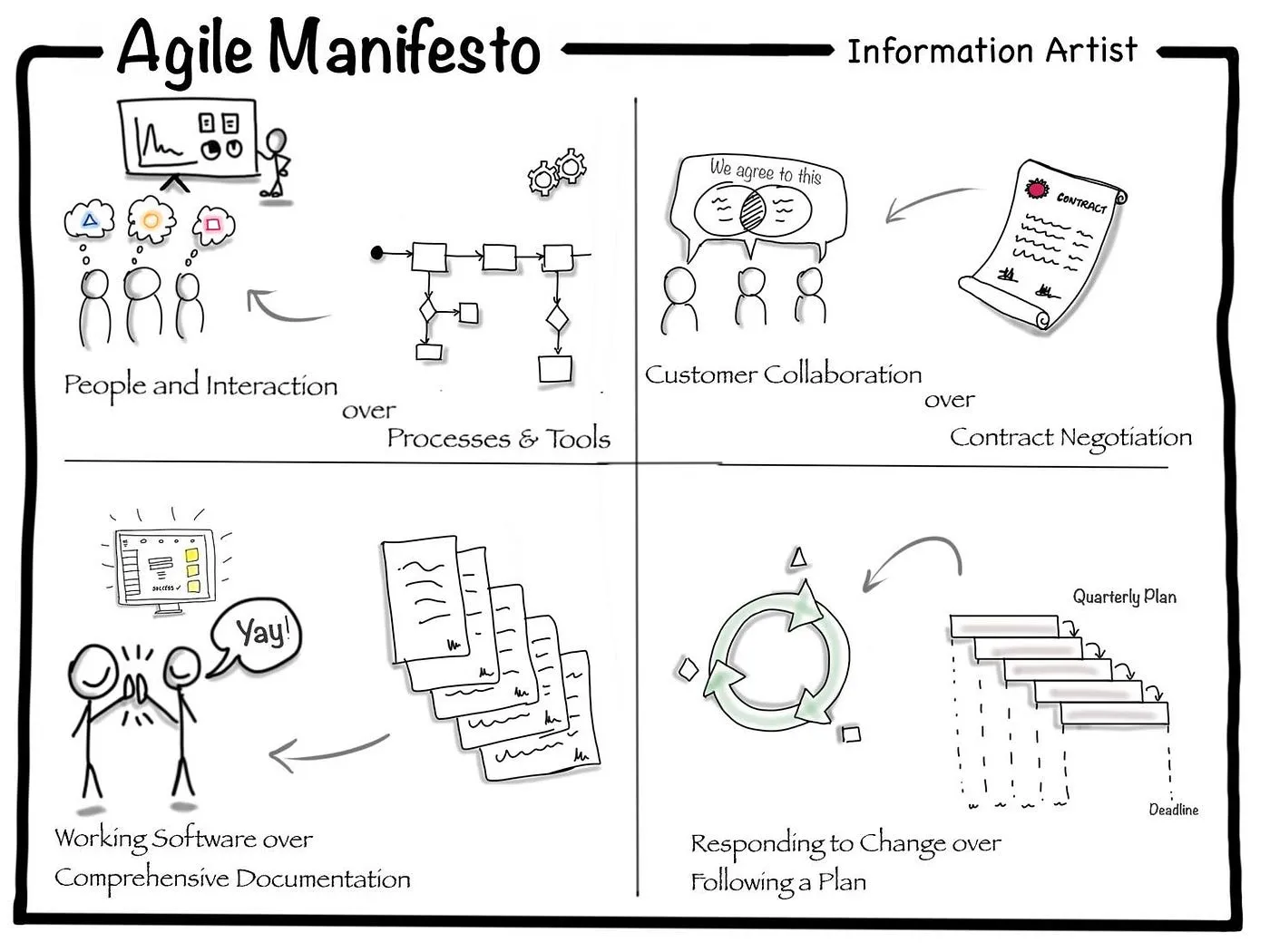and the distribution of digital products.
Architectural Foundations for Startups: Translating Business Into Tech
The architectural foundation of your product is what plays a critical role in your startup's ability to scale, adapt, and, of course, thrive in a competitive market. Early design decisions need to support your long-term business goals while allowing your product to evolve as the business grows. But planning too far ahead can backfire. It can slow your time to market, reduce flexibility, and increase burn rate. All of these can stifle growth, and it becomes especially risky for early-stage products that are still chasing product-market fit or scaling.
\
Planning too far ahead can backfire. It can slow your time to market, reduce flexibility, and increase burn rate.
\ When you over-engineer in anticipation of future needs, it can add complexity you do not need and slow down iterations which are based on real customer feedback. The key is finding the perfect balance between a scalable architecture and staying agile with iterative development. This will make sure your product can meet current demands and remain adaptable to your business progress.
\
The key is finding the perfect balance between a scalable architecture and staying agile with iterative development.
\ The debate between detailed planning and agile, iterative approaches is discussed quite frequently in the field. Even within the same company teams often grapple with the tension between moving fast and doing things right. ==The truth lies somewhere in between.== On the one hand, a solid architectural foundation is essential for long-term success, but on the other hand — it needs to be flexible enough to handle the unpredictable market and the changing needs of the business.
\ This balance gives you the ability to pivot quickly without compromising the integrity of your product, so you can keep your startup competitive and responsive in a very fast-changing environment.
\ Agile practices let startups follow market trends, respond to customer feedback, and then continuously improve their product. So, it’s the same as normal practice – but more effective. This adaptability is crucial for attracting investment because investors look closely at the backgrounds of tech leaders to ensure they have what it takes to build a product that can grow.
\ A well-aligned product architecture shows that your startup is ready to navigate market complexities and scale effectively, boosting investor confidence and the likelihood of securing funding.
Knowing the Business
The way you tackle technical challenges is shaped by your understanding of where your company stands. Clarity is key. In the Pre-PMF phase, it’s all about flexibility and rapid iteration. Once you hit the Growth stage, the focus will shift to making sure the architecture can scale smoothly and handle increasing demands.
2. Short-Term Business Goals:A long-term vision is what fuels your business, and short-term goals are what will make sure that you arrive at your desired destination. They are immediate checkpoints, guiding you to adjust the pace and focus of your development efforts, and allocate your resources in a more mindful way.
3. Long-Term Business Goals:Aiming for an acquisition or breaking into new markets is a great example of long-term objectives that shape your strategic technical decisions. This big-picture view helps ensure that the tech choices you make today will support, but not limit, the future scalability and adaptability of your company.
4. Product Vision:In order to align technology with the overall business strategy a clear product vision is a must. As I mentioned above – this is what drives your business at its core, and whether you’re aiming to dominate a niche market or integrate into a larger ecosystem, this vision usually dictates the early architectural decisions.
5. Competition and Market Specifics:The market is constantly changing and shifting, and the regulatory requirements alterations can often come as a surprise. However, keeping an eye on competitive dynamics and market trends helps you anticipate changes that might affect your product or strategy, which is especially important for tightly regulated industries like fintech or healthcare. A clear understanding equals no costly mistakes.
6. Revenue Streams:Knowing the company’s revenue model — whether it’s based on subscriptions, transactions, or ads — dictates which features or capabilities get priority treatment. This knowledge is key to making sure your development efforts align with the business’s primary drivers.
7. Customers:Customer segments are their own ecosystems where having a deep understanding of pain points and behaviors shapes decisions around user experience and feature prioritization. The needs of your customers are a strong guide for directing the focus of your development efforts.
8. Resource Allocation:Budget, talent, and technology are factors that need to be taken into account to prioritize initiatives and projects properly. The challenge is in balancing immediate technical needs with long-term goals, especially when resources are tight.
\
:::tip **Ask, Listen, Think \n \n **When it comes to gathering information, the answer is simple — ask. You’ve got access to stakeholders, product teams, your technical crew, and especially customers. Direct conversations with these groups give you insights into aligning technology with business goals. If you need to dig deeper, don’t hesitate to request relevant information and context, which can help you to make more informed decisions.
:::
Translating Business Into TechIn an agile environment, you’re working within a dynamic and collaborative ecosystem where cross-functional teams, stakeholders, customers, and partners interact continuously. Information flows rapidly and priorities based on ongoing feedback and changing market conditions shift frequently.
\
 \n
\n
For a technical leader, this environment means juggling a lot of moving parts. You’re constantly balancing: what we want to build and what really needs to be built? What everyone thinks needs to be built and what actually has to be built? What needs to be built and what actually can be built?
\
You’re constantly balancing: what we want to build and what really needs to be built? What everyone thinks needs to be built and what actually has to be built? What needs to be built and what actually can be built?
\ As the business evolves, so do the priorities, and aligning technical efforts with the goals becomes increasingly complex. Let’s take a look at how business goals and technical goals can vary, for example, from the Pre-PMF stage to the Post-PMF stage:
| Stage | Agile Business Goals | Architectural Approach | |----|----|----| | Pre-PMF (MVP) | - Validate product-market fit quickly | MVA (Minimal Viable Architecture): Build only what’s necessary to support core functionality. Ensure it’s flexible enough for iteration but strong enough to scale without major rework later. Try to avoid crutches that you’ll regret after finding PMF. | | Pre-PMF (MVP) | - Rapidly iterate based on customer feedback | Keep things flexible so you can swap parts out or pivot quickly without rewriting everything. For example, Modular Design can allow you to keep components separate so they can be adjusted independently. \n \n | | Pre-PMF (MVP) | - Minimize time to market | Speed up development and deployment. For example, use Cloud Services to avoid reinventing the wheel and get to market faster. | | Pre-PMF (MVP) | \n - Balance speed with long-term sustainability \n | Technical Debt Management: Some technical debt is unavoidable, but manage it carefully to prevent future issues. | | Post-PMF (Growth) | - Scale product to meet growing demand | Ensure the system can handle increased traffic and usage. For example, Scalable Architecture can help refactor for better performance and horizontal scaling. | | Post-PMF (Growth) | - Improve user experience and stability | Make the system easier to maintain and scale. For example, Service-Oriented Architecture (SOA) can help break up the monolith into smaller, independent services. | | Post-PMF (Growth) | - Expand features based on validated use cases | Safely roll out new features. For example, Feature Toggles can allow testing in production without risking the entire system. | | Post-PMF (Growth) | - Enhance reliability and uptime | Increase system reliability. For example, build-in redundancy and failover mechanisms to maintain uptime during failures. |
\ To convert business needs into technical specifications a strategic approach that leans heavily on agile practices is the best way forward. There are a few strategies to make this happen:
\
- User Stories and Use Cases: This can outline how end users will interact with the product and help bridge the gap between business goals and technical requirements so that everyone’s on the same page.
\
- Agile Backlog Management: Keeping a well-organized backlog of tasks that align with business objectives allows you to make priorities based on what will have the biggest impact on the product’s time-to-market and overall success.
\
- Collaboration Tools: Leverage apps like Jira, Trello, or Asana to keep everyone in the loop, and bring a clear understanding of the technical requirements and priorities. This way you can facilitate real-time communication and task tracking.
\
- Iterative Development: Building the product in small, manageable increments leaves space for continuous feedback and course corrections, making sure the product stays aligned with business goals that keep changing.
Certain architectural principles have to become non-negotiable when building a product that needs to grow and adapt. Modular Design is one of those foundational principles that play a key role in creating a system that's not only scalable and flexible but also easier to maintain over time.
Decoupled ArchitectureThis approach is all about breaking down a system into smaller services, components, or modules. Each one is designed to perform a specific function independently, which makes development, testing, and scaling much easier. Decoupling makes sure that modules or services have minimal dependence on each other, enhancing flexibility and making it easier to swap or update components without causing issues elsewhere in the system.
\ This can be achieved with different architectural approaches like Service Oriented, Modular, Microservice Architectures, Event-Driven, or Plugin-based Design. Of course, the choice of the exact approach will depend entirely on your specific situation.
\ Benefits of Decoupling:
- Improved Maintainability: Self-contained modules can be updated or replaced without touching the rest of the system, making the codebase easier to manage and reducing the risk of introducing bugs during updates.
\
- Scalability: For efficient resource allocation and to ensure the system can handle increased loads without needing a significant redesign parts can be scaled independently according to demand.
\
Enhanced Flexibility: Need to add a new feature or modify an existing one? Modular systems allow for easy extensions by simply updating or adding individual components. This is crucial for startups that need to pivot or adapt quickly to market changes.
\
Best Practices:
- Defining Clear Interfaces: Well-defined interfaces between modules ensure that changes within one component don’t ripple through the entire system.
\
- Encapsulation: Each part should encapsulate its functionality, hiding its internal implementation details. This separation of concerns allows for independent development and testing.
\
- Single Responsibility Principle: To make each part easier to understand, develop, and maintain, every component should have a single responsibility, focusing on one aspect of the system’s functionality.
Building a system right in the first place is great, however, maintaining it over time is just as important. What makes a maintainable system? It is one that developers can easily understand, modify, and extend.
\ Techniques for Designing Maintainable Systems:
- Standardization: Clear, understandable code with proper documentation and comments is key. Sticking to coding standards and best practices helps new developers get up to speed quickly and reduces their learning curve.
\
- Automated Testing: Implementing automated tests catches bugs early and ensures that changes don’t break existing functionality. Unit tests, integration tests, and end-to-end tests all play a role in maintaining code quality.
\
- Continuous Integration and Continuous Deployment (CI/CD): Setting up CI/CD pipelines automates code building, testing, and deployment, making sure that changes are continuously integrated and deployed, which reduces the risk of integration issues.
As your startup evolves, so do the demands on your system. Anticipating growth and scalability needs is crucial to building an architecture that can handle these changes without breaking a sweat.
Anticipating Growth and Scaling NeedsPlanning for future growth isn't just about adding more servers when traffic spikes. It involves analyzing market trends, forecasting user growth, and ensuring your system can scale both horizontally and vertically without a hitch.
\ Key Methods for Anticipating Growth:
- Market Analysis and Projections: Keeping an eye on industry trends and growth projections helps you gauge the potential increase in users, data, and transactions. This insight is vital for estimating scalability needs.
\
- Load Testing and Performance Benchmarking: Regular load testing can simulate high-traffic scenarios, helping identify bottlenecks before they become critical issues. Benchmarking under various conditions reveals capacity limits and informs necessary optimizations.
\
- Scalability Planning: A clear scalability plan typically outlines how different system components will scale, whether horizontally (adding more instances) or vertically (boosting capacity).
\ Strategies for Scalability:
- Sharding: Involves distributing data or processing tasks across multiple nodes, helps manage large datasets, and improves performance by balancing the load.
\
- Caching: Implementing caching mechanisms can majorly reduce the load on your system by storing frequently accessed data in a temporary storage layer, allowing faster access and reducing the need for repetitive processing.
\
- Asynchronous Processing: This approach allows tasks to be processed in the background, freeing up resources and enabling your system to handle more concurrent requests efficiently.
Flexibility is your future-proofing. Your architecture should be able to accommodate not just growth, but also shifts in business needs or industry tech changes.
\ Techniques for Building Adaptable Systems:
- Decoupled Components: Designing decoupled components that communicate through well-defined interfaces makes it easier to update or replace parts of the system without affecting others.
\
- API-First Approach: Developing APIs as the primary means of interaction between system components ensures that each part can evolve independently and integrate smoothly with new technologies.
\
Containerization: Tools like Docker allow you to package applications with their dependencies, ensuring consistency across environments and simplifying the deployment of updates and new features.
\
Making Iterative Improvements:
- Agile Iterations: Adopting an agile approach with small, incremental updates allows your system to continuously evolve based on feedback and changing requirements.
\
- Retrospectives and Post-Mortems: Conducting retrospectives after major releases or incidents helps the team learn from successes and failures, guiding improvements for future iterations.

\ Staying sharp on the technical side isn’t just about knowing what’s trending; it’s about diving into the right resources in your business area and figuring out how to apply what you’ve learned.
\ Here’s what to start with:
Your Own Technical Knowledge and Experience: This is your foundation. But technology doesn’t stand still, and neither should you. Keeping up with new tools, frameworks, and methods is key to making informed decisions.
\
Business Insights: As we’ve covered, blending your technical expertise with a solid understanding of the business side is crucial. Knowing the market, the strategy, and what stakeholders are after helps ensure your technical choices align with broader business goals.
\
Competitor Solutions: It’s always smart to see how competitors are tackling similar problems — not to copy them, but to understand what’s working and where you can do it better. Sometimes, following can be a winning strategy too.
\
Cross-Industry Solutions: The best ideas often come from checking out how other industries handle similar problems. Looking at different fields can give you new angles to approach your own challenges.
\
Client and Partner Feedback: When working in areas like B2B SaaS or fintech, where you often interact with partners' tech teams or handle integrations, their feedback and expertise are invaluable. Their real-world insights can reveal challenges and opportunities that might not be obvious from your perspective and help you fine-tune your solutions.
Aligning your product architecture with business goals isn’t easy. However, by focusing on modular design, maintainability, and flexibility, you can build a system that’s strong enough to support growth yet adaptable enough to handle change. Listen to your client and partners’ feedback, explore cross-industry solutions, and learn from competitors. This well-rounded approach ensures your architecture can scale and evolve as your startup grows.
\
:::tip In the end, it’s all about balance — creating a product that meets today’s needs while staying ready for tomorrow’s challenges. With the right strategies, you’ll set your startup on a path to long-term success.
:::
\
- Home
- About Us
- Write For Us / Submit Content
- Advertising And Affiliates
- Feeds And Syndication
- Contact Us
- Login
- Privacy
All Rights Reserved. Copyright , Central Coast Communications, Inc.